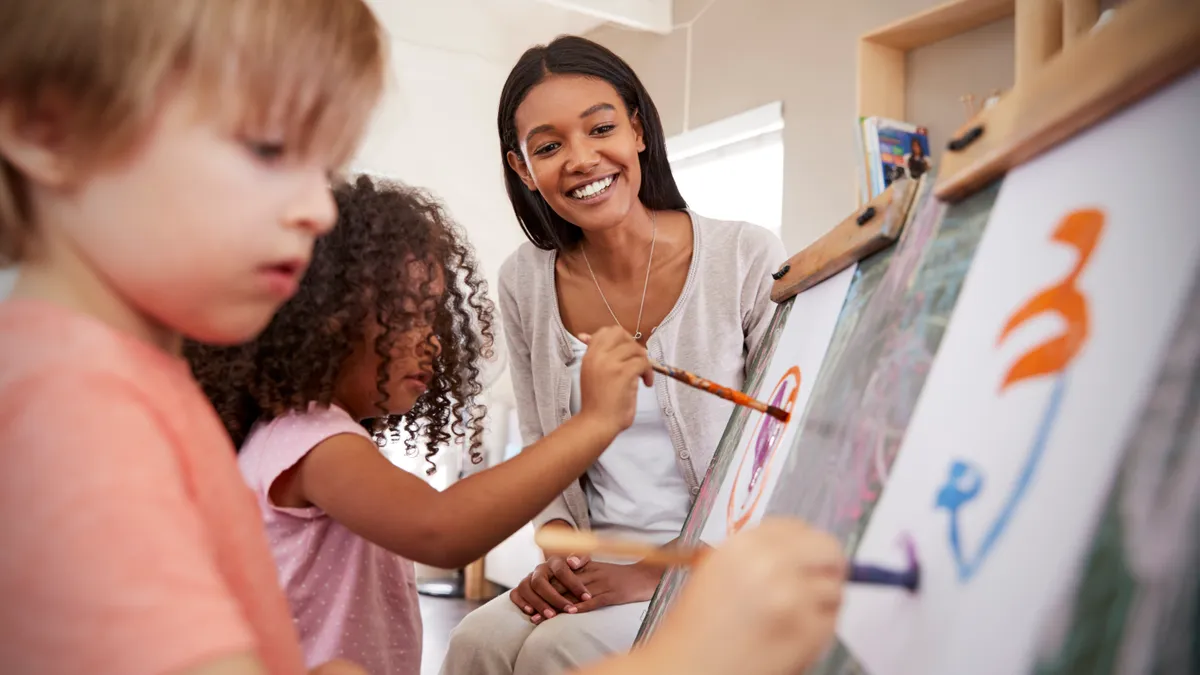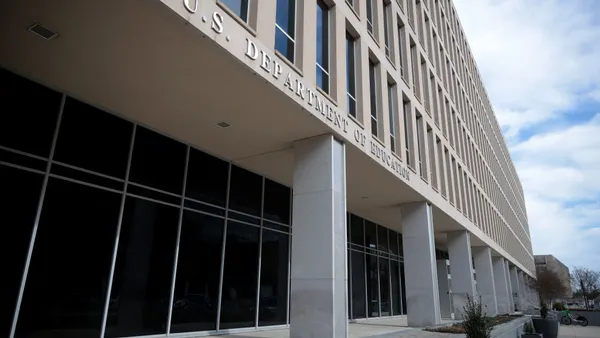While the pandemic left an indelible mark on countless kids, it especially affected those in the most vulnerable groups. That includes the youngest learners, many of whom will be starting organized school this fall. Given that children born just before or during the pandemic often had fewer interactions with others during this developmentally formative time, educators recognize these students may lack skills they otherwise would have as they enter school.
Research confirms the reality of that gap: One study from Columbia University found that babies born during the pandemic scored lower in several developmental areas, including motor skills and social-emotional development, than babies born before the pandemic. Additional research from the First Five Years Fund found that stress and trauma related to the pandemic can contribute to an increased risk of ongoing emotional and behavioral issues.
“Birth to age three represents a significant time of brain development, and whatever that child has been exposed to environmentally will impact the architecture of the brain, either positively or negatively,” says Andi Turner, research director for Pearson Clinical Assessments. Turner has more than two decades of experience in a variety of focus areas including individual, family and group therapy; early childhood, Head Start and elementary school consultation; and clinical assessment with a focus on the autism spectrum and developmental disabilities.
The implications are vast for educators, Turner says. She offers five ways they can address the challenges today’s youngest learners face.
1. Understand the deeper issues impacting young learners.
“While we all went through a collective trauma during the pandemic, those who were already vulnerable and were on the precipice economically suffered an even bigger blow,” Turner says. “Kids can't help the circumstances of where they grow up, and educators must be aware of the years and years of social injustice many families have faced, and how the accompanying issues may be affecting students.”
The pandemic increased stressors on many families that may be affecting student behavior even today. Those include the illness or death of a family member, loss of income, lack of food resources, school closings, childcare limitations and, in some extreme cases, abuse or neglect. Particularly among marginalized groups, these young people may have been affected by toxins found to be more prevalent in lower-income areas, like lead, asbestos or secondhand smoke.
What’s more, ongoing political and racial conflicts, as well as the high-profile killings of people of color (including Ahmaud Arbery, Breonna Taylor, George Floyd, Adam Toledo and Mario Gonzalez Arenales) – and the civil unrest that followed in some communities – added another layer of collective trauma and stress during the pandemic.
Educators can help young learners succeed by understanding the long-term impacts of social injustice in their communities and how the pandemic affected those disparities. That knowledge can help educators better spot students in need of additional support and advocate for the right interventions.
2. Realize that school plays an integral role as a safe place.
For many children, school is the only place where they can breathe fresh air, eat healthy food or experience the affirmation that helps build positive brain development. Turner advises educators to establish rituals that honor each child as a unique person, such as this teacher who greets each student with a special handshake each day.
“Building trusting relationships is going to provide the foundation for learning,” Turner says. “If a child does not feel safe in an environment, their learning will be compromised.”
3. Prioritize a positive community culture.
The “Conscious Discipline” curriculum stresses the importance of communicating that you are a “school family,” where each person takes care of and respects others. “Seeing the best in people helps build trust,” Turner says. She advises adults to model compassion and calm, even when kids are unable to. “Have appropriate developmental expectations because kids often can't help themselves,” she points out. “If they're being defiant, assume it's a skill deficit rather than a conscious negative behavior, and approach it with a mind toward teaching the skill rather than punishing the child.”
Turner also emphasizes the benefits of a schedule in the classroom. “Kids thrive on routine, and many households don’t offer that,” she says, recommending that educators develop an established order for the day’s cadence but not stress if they fall off schedule. “As kids learn the structure, they begin to trust the consistency and trust the adult because of it.”
4. Partner with caregivers.
Don’t overlook the benefits of embracing families and caregivers as allies in working together to make a child's learning the best it can be. Turner advises framing your remarks positively and focusing on strengths first, then sharing ways a child might need support and how the caregiver can help at home.
She acknowledges it can be hard to catalog each child’s strengths in a busy classroom, so she advises taking short notes throughout the day on your phone or a small notepad. You can consolidate the notes later so you don't miss moments in which you can "catch kids being good," like sharing or helping a friend.
5. Deploy universal screeners to ensure no child is overlooked.
A big challenge educators face when working with today’s youngest learners is that they are less likely to know which deficits individuals may have. “It’s probably a good assumption that during the pandemic many of them lacked extensive exposure to community activities, which likely affected development, perhaps significantly,” Turner says. As an example, she cites homes where caregivers predominantly speak a language that’s not English. If a young child hasn't gone out into other community spaces like a church or a daycare, they likely haven’t had much exposure to spoken English.
In addition, first-time parents may not have had the opportunity to develop a frame of reference to compare their child with others to see if their behavior and skills are typical.
Deploying assessments can help. Turner advocates for using a system that assesses students when they start school and then uses a progress monitoring tool to track the classroom community to see how each child is progressing individually and compared with their peers.
This assessment cadence can be a lot for educators to juggle. Turner points schools to two Pearson assessments that can help early childhood educators and service providers evaluate a child’s development, school readiness and strengths:
- Bayley Scales of Infant & Toddler Development, 4th Edition (Bayley-4): Designed for children ages 16 days to 3 years, 6 months.
- Bracken Basic Concept Scale, 4th Edition: Receptive (BBCS-4:R): Designed for children ages 3 years to 7 years, 11 months.
As we reflect on the profound impact of the pandemic on school readiness — particularly for the youngest learners — remember that learning recovery will require a concerted effort from a variety of stakeholders.
We all have a role to play. To learn more, check out Pearson’s Mental Health Resource Center to access early child development resources to help your youngest learners today.







 Dive Awards
Dive Awards



